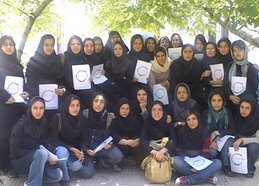What I understood from the third page of Rumi introduction is this:
Molana’s language starts from human repentance and prayer which at first is material, then it becomes wider and reaches (goes through) the endless unity(of God) which is spiritual. Infact, his language is likely to show this infinity. Starting from a dot (.) and reaching endless dots (...... ).
Fihi ma fih or it is what it is (I don’t like this translation because it has limitation in itself!) includes spiritual discussions with his students, holy poems and phrases, and sama dance (Whirling Dervish exercise) which by making it, Molana opened a spiritual door for the sad people of Konya and Turkey. As he says “This is the sema of slavery and mastery dancing together”
Arberry the translator of Discourses of Rumi declares that his literal work “is not an easy book to read…and the original is by no means easy (not at all) easy always to understand” and his translation (Chittick and Shah) has technical problems. The editors hope that this edition of the book is to build on Professor Arberry’s contribution (means is to use his contribution as a basis for further progress).
One of the differences between the original manuscript of Rumi’s discourses and this book is the dropping of phrases like “may Allah bless him and give him peace” (درود و رحمت خدا بر او باد) which came after every references to prophets in Rumi’s days and even now (this shows respectful way of speaking among Muslims). Basically Rumi makes many references to Koran because he knows that his listeners are familiar with it and it’s a flick for them to remember their sanctities.
Monday, October 8, 2007
Subscribe to:
Post Comments (Atom)


1 comment:
Thought provoking. Very true. halterneck wedding dresses Christian Louboutin Sandal Vintage Wedding Dresses
Post a Comment